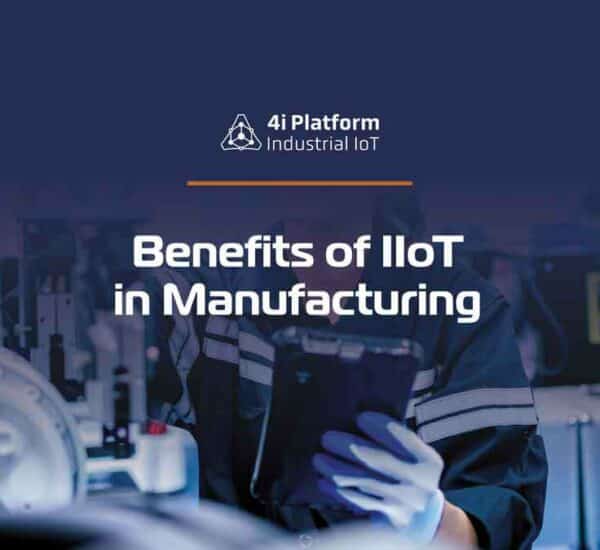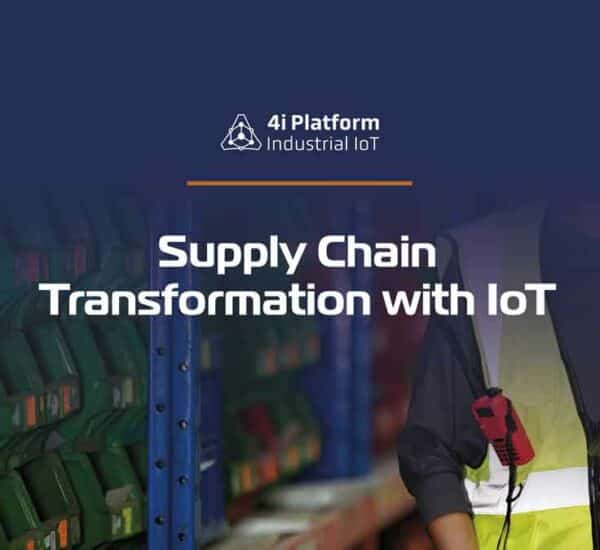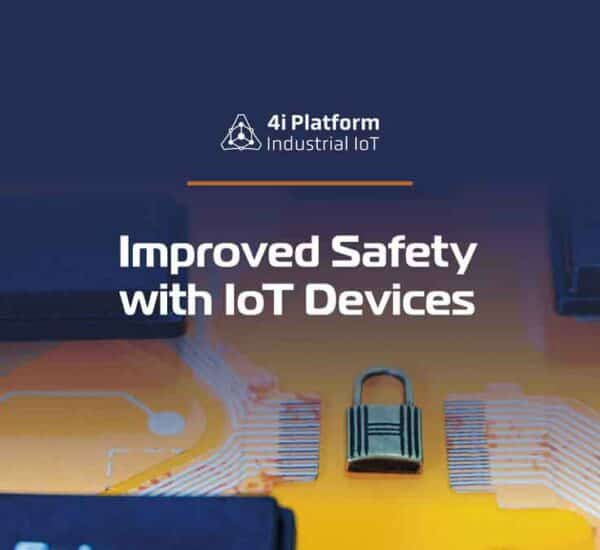As manufacturers digitally transform their value chains, connected devices will play a major role. It takes a laser focus on six key areas for the success of industrial IoT in manufacturing implementation.
The internet of things (IoT) connects physical machines and equipment in a factory to the digital world of cloud, data analytics and artificial intelligence (AI). It enables you to collect more data, analyze the information quickly and make better business decisions.
Forward-thinking manufacturers already know they need to bring IT closer to operational technologies that control machines and equipment. Traditionally, these technologies were managed by separate departments in relative isolation. Leaders, such as food and beverage giant Lion, have united the teams to create a single integrated technology function to leverage synergies.
The next step is to harness technology to maximize the business and drive innovation. Industry 4.0 advances in manufacturing are setting the standard for creating the smart factory and supply chain of the future using industrial IoT in manufacturing, analytics, cloud computing and cyber physical systems.
Manufacturers can now contemplate business model innovation and new revenue streams as they leverage the deluge of IoT data. This is often called the servitization of the business.
The importance of Business 4.0 and the IIoT is well known, but how do you start implementing these concepts to maximize your chances of creating real value?
Critical Success Factors in the Implementation of Industrial IoT in Manufacturing
There are six essential success factors organizations will need to consider to successfully utilize IIoT in their digital transformation initiatives.
Business Benefits
Early discussions about industrial IoT primarily focused on the technology and what it could do, rather than on the business value it could deliver. This is not surprising; IoT technology’ cool factor has clearly captured people’s attention. More recently, the conversations have shifted to the variety of business benefits IIoT can provide.
Business model innovation
Companies can create new products and services to generate additional revenue streams. Machines using IIoT sensors can gather huge amounts of data, and advanced analytics can transform it into”smart data”, that is, digital information that is formatted so that it can be acted upon at the set point before being sent to a downstream analytics platform.
Smart data can support decision making or can trigger actions automatically, and this value can be monetized. One of the most popular use cases is predictive maintenance of factory assets. If the organization servicing the assets is able to predict equipment failure, it can offer the predictions as an additional paid service.
The disruptive potential of industrial IoT in manufacturing resides in its ability to turn businesses inside-out, transform goods into services, transform services into learning architectures and make us completely rethink what the organization of the future may look like.
Customer experience
IIoT can help make products and services more attractive. IIoT-enabled parts, for example, are easier to find in a warehouse when used in conjunction with an indoor navigation system that can lead warehouse staff directly to their location.
A smart product can determine when service levels are being exceeded or if it’s time for a maintenance check, potentially preventing a breakdown. The data generated by smart products also can be utilized to enhance the service experience in the after-sales market by learning about customer usage and preferences.
Industrial IoT in Manufacturing: Operational Excellence
Sensors and actuators can carefully monitor the manufacturing process and products as they travel through a factory, enabling real-time control of the manufacturing system.
While control systems have monitored factories for decades, it is now possible to make those systems more intelligent by feeding IIoT and business data into smart algorithms. In supply chain operations, sensors and IIoT devices can track and trace products in their way from the factory to the customer, anywhere in the world.
Environmental stewardship
Traditionally, lower price and higher revenue have been the only measurements of success for manufacturers, but today they are also being measured on corporate social responsibility. This means that the environmental impact of the manufacturing process and the products in use are areas of value creation.
Examples of value include energy savings that result in a lower carbon footprint as well as the monitoring of air, soil and water quality. IIoT also can help track the environment, triggering alerts and even shutting down operations if needed.
Employee health and safety
Risks are commonplace. Managing the risks effectively avoids the human tragedy and financial loss associated with accidents. IIoT sensors can be used to track the immediate environment around a worker, but can also measure a person’s vitals, such as heart rate, fatigue or stress. Knowing where an employee is located — together with health data, defined operational limits and data analytics — can help detect risks and issues in the work environment.
Compliance
In many cases, manual inspections can be replaced by IIoT technologies. For fixed assets in a manufacturing plant, this can be achieved through sensors and through autonomous vehicles with sensors, cameras, microphones and other technology needed to perform inspections. In larger facilities, drones can inspect the outside areas. Inspectors responsible for compliance can use IIoT systems to increase the inspection frequency and therefore detect compliance issues early on.
Strategic Alignment
Some organizations have established digital innovation labs with no clear strategic direction or technology roadmaps. The outcome is often proof of concept that don’t have value for the business or are not supported by their technology functions.
For IIoT to have a positive impact on the organization, it needs to align with the overall business and technology strategy. The business strategy provides guidance on goals and objectives, while the tech strategy identifies constraints around technology choices.
The Internet of Things will transform business processes into IoT-enabled business procedures, where things and humans collaborate. We will witness an increased autonomy of smart things that will be able to navigate their own ways through our factories, distribution centers and supply chains, analyzing context-sensitive multiple data points to drive highly individualised business processes.
The best way to ensure strategic alignment is to create an IoT strategy that considers current strategies and also drives changes to those strategies. For example, if IIoT provides a new way to guarantee the health and safety of factory workers, the human resources strategy should consider this. Strategic alignment is crucial, but it is not a one way street.
Business Process Focus
The discussion around IIoT is dominated by data analytics, machine learning and AI. Business processes may not be the most exciting subject, but they are still the core of any organization and define the business operating model’s structure.
An emerging focus in the manufacturing business is the integration of IIoT solutions into business processes. Within an IoT report, McKinsey notes that the missing integration of IoT solutions into existing business workflows is a leading IoT capability gap.
IIoT software vendors may claim their products integrate with business systems, but simply passing data to a business system is not the same as creating an end-to-end business process.
Using that process, organizations will have an increased variety of smart things in their factory, increased levels of automation and more complex supply chains. The expectation is to make everything work together effectively in a way that is dramatically better than today.
Operating Model Changes
One of the major challenges that companies face when attempting to solve for revenue generating IoT solutions is the fact these solutions often require disrupting the same business model that made them successful to date.
Many IoT industry participants talk about the convergence of IT and operational technology, meaning that the management of business systems and factory automation technologies will converge.
IT and operational technology convergence does not just mean a convergence of technology, but also that you can optimize collaboration between your office floor and your factory floor. In many cases, this will lead to changes in the business operating model and will require new capabilities in your organization to manage.
Another aspect is the creation of value networks, which are purpose-built partner ecosystems with the customer in the center. ETH Zurich and Bosch SI developed the concept of an “IoT Business Model Builder” that describes the implementation of the idea of business model innovation as part of Business 4.0.
The concept of value networks leads to an extended enterprise and is necessary because end-to-end IIoT solutions are much more complicated than separate IT and operational technology solutions were in the past, and require a very close collaboration between the value network stakeholders.
Capability Uplift
With changes to the technology landscape and operating model, workers need to learn new skills as their roles change. It is important that individuals understand the industrial IoT in manufacturing and Business 4.0 concepts from both a business and technology perspective, establishing a common language to lessen the risk of misunderstanding.
For the next level of detailed understanding of industrial IoT in manufacturing, focused programs that advance workers’ capabilities need to be developed. In these programs, active participation of the partner ecosystem, or value system, should be considered. A common learning experience can improve and drive day-to-day collaboration.
Consider how educational and training programs can affect certain roles in a manufacturing company and close skills gaps. Chief operating officers can get new insights into the operation of the business, but they will want to understand what the new data is and how to incorporate it into their decision making.
Chief technology officers will learn about new technologies and will want to select the ones relevant for the business. They will want to learn about functionalities provided by IIoT gateways, low-power WAN, sensor boards and IoT platforms. Maintenance technicians will want to understand why predictive maintenance is important, and the way IIoT and data analytics will enable them to be proactive with maintenance inspection activities.
End-to-End Security
Vulnerabilities in self-driving cars get a whole lot of media attention and illustrate the safety concerns around IIoT. Smart factories are also at risk, and although technology vendors are quick to provide security patches, the risks demonstrate that security is often not built into the design of a production system. One of the reasons is that those solutions were closed systems for decades and relatively safe from intruders.
In the past, manipulating machines in a factory typically required physical access to the facility, but by linking assets to the internet and deploying industrial IoT in manufacturing capabilities, facilities now face new security risks.
New approaches for cyber-physical systems are being developed that include authentication and encryption capabilities built into hardware, real-time analytics of network traffic, and IIoT gateways that function as protective shields for factory equipment, similar to the way firewalls perform in IT networks. With the convergence of IT and operational technology,“security by design” is becoming a key decision criterion as companies select technologies.





